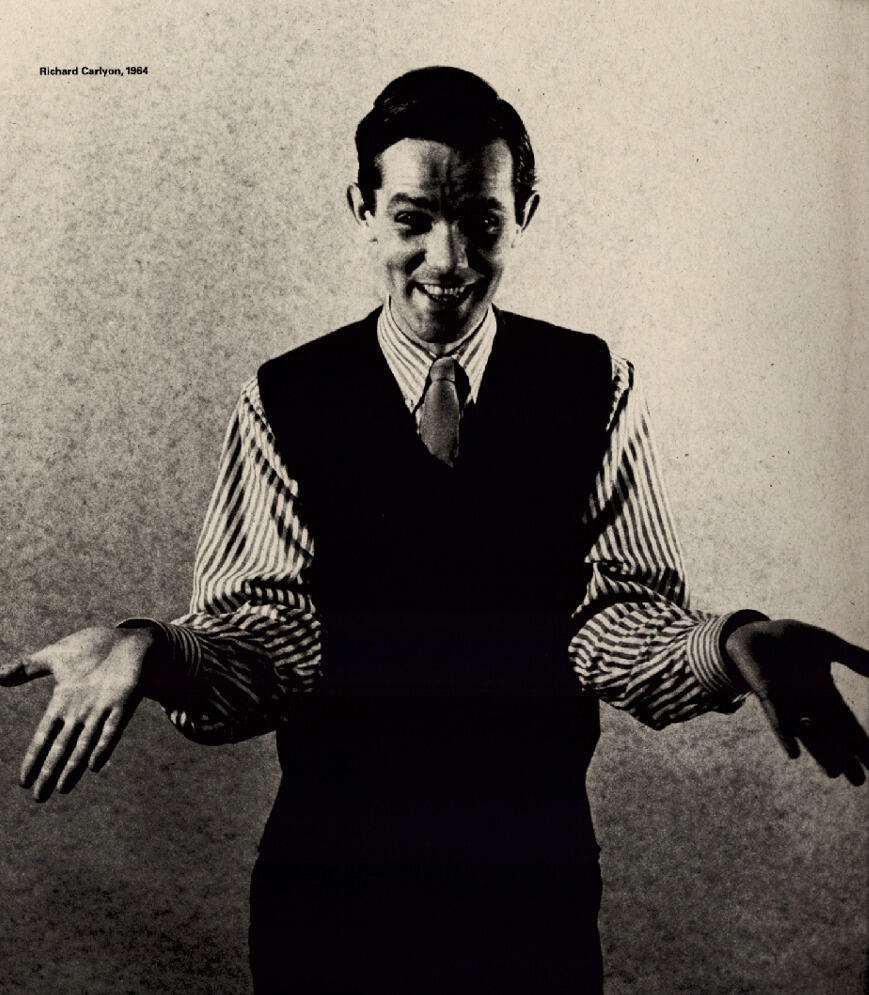Feb. 1, 2018
VCU Libraries, ICA to present ‘The Life and Work of Richard Carlyon’
The Feb. 8 event will showcase video installations of the influential Richmond artist and VCU School of the Arts faculty member.
Share this story
VCU Libraries and the VCU Institute for Contemporary Art will look back at the influential artist and VCU School of the Arts faculty emeritus Richard Carlyon (1930-2006) with a one-night program and art showing of several of his video installations.

Courtesy photo
The event — held in conjunction with a new retrospective exhibition of Carlyon’s work, “A Network of Possibilities,” at the Reynolds Gallery — marks the recent addition of video works to the Richard Carlyon papers held by Special Collections and Archives at VCU Libraries. It also will mark the launch of a campaign to raise a $1 million endowment for Special Collections and Archives at VCU Libraries.
The event, “The Life and Work of Richard Carlyon,” will be held Feb. 8 from 5:30 to 7:30 p.m. in the third-floor lecture hall of James Branch Cabell Library, 901 Park Ave. Attendance is free and open to the public, though registration is requested.
“Richard Carlyon was a legend in his day and he had many, many days at VCU with a teaching career that spanned more than 40 years,” said Kelly Gotschalk, director of development and major gifts for VCU Libraries. “In his work, he always was investigating and using new materials and technologies. He was always one of Richmond’s most progressive artists and constantly pushed the boundaries of contemporary art.”
Joseph H. Seipel, interim director of the Institute for Contemporary Art and dean emeritus for the School of the Arts, said that Carlyon was “one of the irrepressible icons of VCU and the School of Arts.”
“His incredible range of intellectual curiosity and uncanny ability to pass his enthusiasm for the arts to students and all of us who knew him was magical. His good spirit and tremendous sense of humor were infectious and an essential part of the DNA of the VCU School of the Arts,” Seipel said. “I hope this event can somehow telegraph how important his contributions were to all of our lives. We all, in one way or another, stand on his shoulders.”
The video artwork recently acquired by Special Collections and Archives is from the 1990s and early 2000s and includes several works designed to be viewed on multiple monitors as an installation. The works were a gift by Carlyon’s wife, artist Eleanor Rufty, and his son, Jason Carlyon, Ph.D., a professor in the Department of Microbiology and Immunology in the VCU School of Medicine.
“These videos highlight Carlyon’s keen interest in applying chance-determined structures to create compositions of movement and sound,” said Yuki Hibben, assistant head and curator of books and arts, Special Collections and Archives. “Carlyon was drawn to the work of John Cage and Merce Cunningham and developed his own chance systems to identify compelling patterns and rhythms from media, language and ordinary actions in modern life.”
Special Collections and Archives is preserving the videos for future use by researchers, she added.
“The video installations have the potential to be re-created for display in galleries and museums,” Hibben said. “As a highly influential artist and educator in the Richmond arts community, it is vital to preserve [Carlyon’s] works so that artists, students, scholars, curators and other researchers can access and continue to learn from his work in the future.”
Carlyon studied painting and dance at Richmond Professional Institute (now VCU), earning a bachelor’s degree in fine arts in 1953 and an MFA in 1963. He joined the School of the Arts faculty shortly thereafter, teaching in the Departments of Painting and Printmaking, Communication Arts and Design, and Art History until his appointment as professor emeritus in 1996. He received the Distinguished Teaching of Art Award from the College Art Association in 1993, and the Presidential Medallion, VCU’s highest honor, in 2005.
He was awarded three professional fellowships from the Virginia Museum of Fine Arts, as well as a fellowship from the Virginia Commission for the Arts to prepare a series of works based on the movement patterns of dances by Martha Graham.
In recent years, Carlyon’s work has been featured in solo shows at several Richmond galleries. He remained a highly productive artist until his death in 2006, working simultaneously in painting, drawing and other media. His late works, developed through chance systems, vividly reflect his preoccupation with the visual aspects of language, sound and movement.
He also was instrumental in organizing the Bang art festivals at RPI in the 1960s. The festivals brought a number of important contemporary artists and dancer/choreographers, including John Cage, Merce Cunningham, Yvonne Rainer, Roy Lichtenstein, Judith Dunn and many others to Richmond, Hibben said.
“His artwork crossed art genres and disciplines, and he introduced many in the Richmond and RPI/VCU community to the most progressive artists and ideas in contemporary art,” she said.
For more information or to register for the event, visit: www.library.vcu.edu/about/events/2017-18/richard-carlyon-.html.
Subscribe to VCU News
Subscribe to VCU News at newsletter.vcu.edu and receive a selection of stories, videos, photos, news clips and event listings in your inbox.










